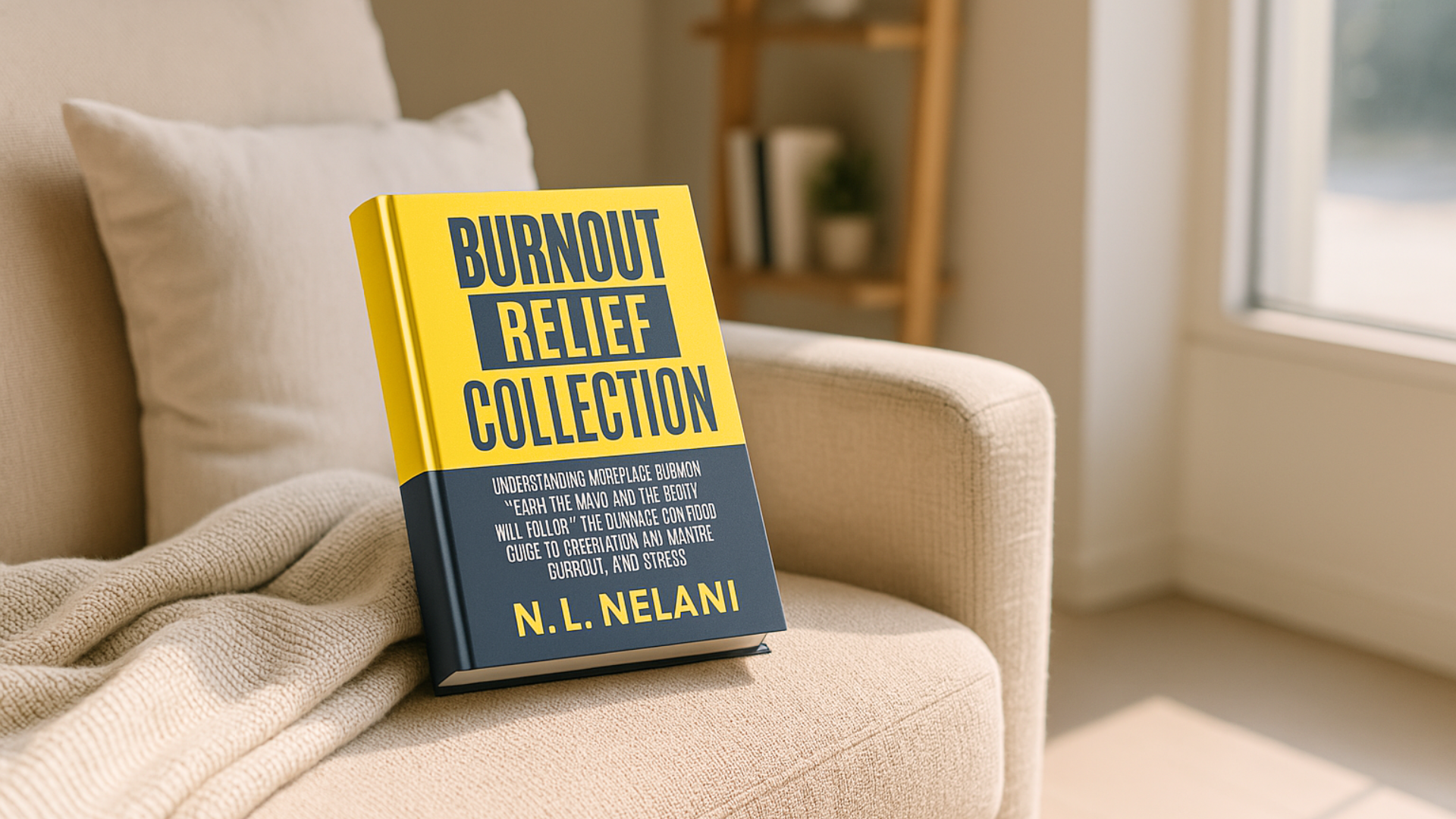Navigating Workplace Burnout and Finding Relief

Book Review: Burnout Relief Collection by N.L. Nelani
A compassionate, two-part guide for navigating burnout and returning to calm through reflection, self-awareness, and steady self-care
In Burnout Relief Collection, N.L. Nelani brings together two short yet meaningful works that approach burnout from both analytical and holistic perspectives. The first half, Understanding Workplace Burnout, examines how burnout shows up in modern work environments and how it affects health, performance, and mindset. The second, Calm the Mind and the Body Will Follow, invites the reader into a gentler process of healing through mindful awareness, creativity, and nervous system regulation.
What emerges is a quiet and empowering reminder that burnout is not a personal failure. It is a signal that something needs care. Nelani offers language, tools, and reflection for readers who are ready to slow down and reconnect with themselves in ways that are sustainable and kind.
What the book promises
The book promises to help readers understand the deeper roots of burnout and chronic stress, especially within professional environments. It also offers strategies for calming the nervous system and restoring a more grounded, clear-headed way of living. Rather than taking a purely clinical approach, Nelani blends research with self-awareness and intuitive practices that support emotional and physical recovery.
The goal is not to bounce back quickly but to build something more stable from within.
What the book delivers
Nelani delivers this promise through a steady, thoughtful voice and a structure that feels both informative and emotionally supportive. In Understanding Workplace Burnout, she introduces the phases of burnout and the subtle ways it shows up in our bodies, energy levels, and decision-making. She explores the tension between modern work culture and human needs, offering insight into why so many people feel overwhelmed despite their best efforts.
In Calm the Mind and the Body Will Follow, she shifts into a more introspective tone. This part of the book focuses on actionable self-care that supports long-term healing. Readers are introduced to breathwork, journaling, belief re-patterning, sensory tools, and movement practices that encourage reconnection with the body and mind.
Together, the two halves form a complete arc: understanding what burnout is and learning how to respond with clarity and care.
Style and structure
Nelani writes in a calm, clear tone that is both professional and personal. She avoids jargon and uses accessible language, which makes the book ideal for readers who are already tired or emotionally overwhelmed. Her words create space rather than pressure, which is essential for anyone already stretched thin.
The book is divided into short chapters with clear subheadings, making it easy to dip in and out depending on what the reader needs most in the moment. The first half focuses more on information and context, while the second leans into sensory and reflective tools. At the end of several chapters, Nelani offers questions or prompts to deepen the reader's personal integration.
This thoughtful pacing supports both learning and recovery. It allows the reader to move at their own speed and return to key ideas when needed.
Where the book shines
This book shines in its balance between knowledge and compassion. Nelani does not treat burnout as something to fix through willpower. She treats it as something to listen to and learn from. Her approach acknowledges how burnout is shaped by both internal habits and external demands, and she avoids the trap of blaming individuals for structural problems.
Her guidance is especially helpful for readers who have already tried the usual self-care suggestions and found them lacking. Instead of offering surface-level tips, she offers tools that work on a deeper level, like shifting nervous system responses, reframing self-talk, and using intentional breathing to create calm in the body.
The sections on belief systems and energy management are particularly strong. Nelani connects psychological insight with practical application in a way that is gentle but powerful. She encourages small, repeatable changes rather than dramatic reinventions, which makes the work feel possible even for someone who feels depleted.
Light limitations
The open-ended structure of the book, while supportive, may feel too fluid for readers seeking a step-by-step recovery plan. There is no singular path outlined through the material. Instead, readers are encouraged to follow their intuition and engage with the practices that resonate.
The tone between the two parts of the book also shifts noticeably. While this mirrors the shift from analysis to healing, it may feel disjointed for readers expecting a continuous narrative. Seeing each part as a stand-alone guide may help readers move through them more effectively.
Finally, readers looking for workplace-focused solutions or organizational change strategies may need to supplement this book with other resources. Nelani’s focus is primarily on personal empowerment and internal alignment rather than institutional reform.
Final thoughts
Burnout Relief Collection offers more than insight. It offers reassurance and a starting point for healing. N.L. Nelani meets readers where they are, whether they are still trying to name their exhaustion or are ready to begin shifting out of it. She does so with clarity, warmth, and respect for the complexity of what burnout really means.
This is not a quick-fix book, and it does not pretend to be. It offers steady, grounded guidance for those who are ready to feel more present in their own lives again. With a balance of gentle honesty and practical care, it shows that relief does not always come from doing more. Sometimes, it begins with noticing, slowing down, and making one small change at a time.
Highly recommended for professionals, creatives, caregivers, and anyone who feels worn out by demands that never seem to end.